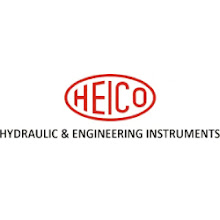Hydraulic machines are a great tool for getting your work done in a timely manner. They are also incredibly useful for businesses that need to move a lot of products and have limited space.
The most common type of hydraulic machine is the forklift, which is used to lift things over one ton. There are other types of hydraulic machines as well, including portable ones that can be moved around your facility.
There are several different types of hydraulic machines—each with their own pros and cons. And while they each may seem like they would be useful for different purposes, they actually all serve the same basic purpose: moving things from one place to another!
When you're looking to buy a hydraulic machine, it's important to make sure you know exactly what you're getting. Hydraulic machines are designed to do specific tasks and have different uses, so it's important to pick one that fits your needs.
Hydraulic machines are great for heavy-duty tasks like moving large objects, but they can also be used for lighter jobs like dusting or cleaning the garage. If you need a machine that can do multiple tasks at once, you may want to consider a pneumatic machine.
The number of cylinders on a hydraulic machine will determine how much force it can produce. A small machine might have 1 or 2 cylinders while a larger one might have 6 or 8! This means that the power output will be higher in a larger machine than in a smaller one.
A portion of the more normal hydraulic machines used to play out these errands could include:
- Cranes
- Tractors
- Tractors
- Work vehicles
- Transports
- Loaders
- Forklifts
Steam Power, Cables, and Winches
Early construction equipment, including the steam scoops that demonstrated priceless to the railroad, mining, and construction ventures, utilized complex mechanical frameworks to accomplish the movement of a digging tool or pail. These frameworks included pinion wheels, linkage frameworks, ropes, and links that were driven by powerful steam motors and later powerful diesel motors. They were wonders of innovation in their time and made accomplishments of designing, for example, our most memorable railroad frameworks, the Hoover Dam, and the Suez channel conceivable.
First Use of Hydraulics
History demonstrates that the principal utilization of hydraulic machines in construction equipment happened back in 1882. The machine was a half and half hydraulic earthmover and keeping in mind that its appearance is a long way from what we interface with the word backhoe today, it was genuinely a pivotal development, for now, is the right time (joke expected). Its motivation was to help with the construction of body docks in England. You saw the utilization of the word crossover: liquid power (water, to be exact) was utilized to activate hydraulic parcels for duplicating power while the remainder of the framework was all the while utilizing links and winches. This plan, but fascinating and prophetic, didn't end up being extremely compelling.
First Hydraulic Excavator
In 1897, the world saw the principal totally hydraulic earthmover/scoop, worked by the Kilgore Machine Company. One of the advantages promoted by its fashioners was the way that hydraulics permitted the movements to be padded, lessening the container on the administrator and the effect harm that the machine would unavoidably insight over the long run. These servo-hydraulic systems, not at all as the crossbreed talked about before, were incredibly powerful. Presently liquid power was utilized to dig, lift, derrick, and store rather than manpower, which gathered enormous groups of men working with hand devices attempting to achieve a practically brutal assignment.
Future Trends in Hydraulic Machinery
There are a few patterns fostering that could additionally modify the fate of construction machinery. The plan of hydraulic machines is likewise zeroing in more on power thickness rather than power alone, particularly with parts, for example, hydraulic engines where space is at a higher cost than expected. Increasingly more construction equipment makers are moving towards electronic control rather than the more customary control-by-wire techniques. The appearance of IIoT (or Industrial Internet of Things) takes into consideration remote observing of framework execution and use while supporting prescient upkeep.
Final Words
The presentation of hydraulics into the construction industry has radically expanded efficiency, permitting more work to be finished quicker than expected. It has expanded the power limits of construction equipment, permitting conservative machines to give the essential power to moving material and different errands in very restricted spaces. Hydraulic power has permitted construction equipment to be controlled with extraordinary accuracy and accomplish an unbelievable scope of movement.
Hydraulic machines have even made it feasible for a solitary machine to fill numerous needs in a solitary day: a pallet steer might be utilized for digging posts in the first part of the day and afterward switched to moving beds of provisions in the early evening. From digging profound establishments to moving gigantic measures of soil to lift fragile however enormous glass windows into place, hydraulics have turned into an irreplaceable part of the construction industry all in all.


.jpg)




0 Comments